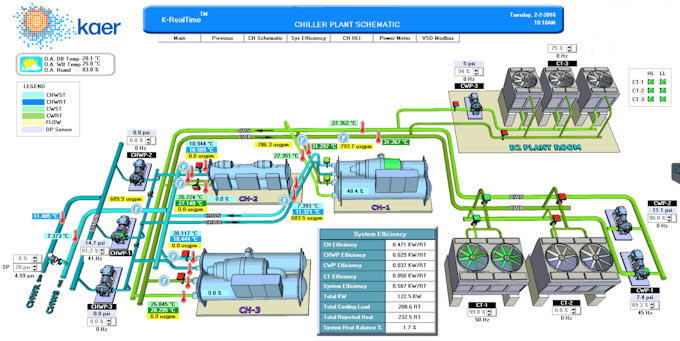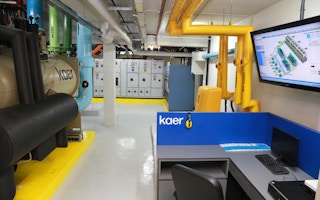Air conditioning is the sine qua non of every commercial building or household in metropolitan cities today. But while it is essential, especially in tropical Singapore, much of its operations and maintenance go unnoticed.
Buildings are responsible for the bulk of a country’s total energy consumption and have thus been assigned the responsibility of ensuring their operations are energy efficient.
Even before the signing of the Paris Agreement to limit global temperature rise to below 2 degrees Celsius, countries like Singapore have started to implement initiatives, offer grants, and issue guidelines to manage consumption and reduce environmental impact.
Singapore has also pledged for at least 80 per cent of its buildings to be certified green – under its Green Mark scheme – by 2030.
The Green Mark scheme, which was first launched in 2005, is a benchmark certification for both residential and commercial buildings that have successfully reduced water and energy consumption.
The governing body for the building industry, the Building and Construction Authority (BCA), assesses existing buildings every three years, while new buildings must meet the Green Mark guidelines before they can be built.
Air conditioning runs on electricity and constitutes a significant chunk of a building’s energy requirements. But building owners rarely pay any attention to the air conditioning’s cooling system, resulting in a reluctance to try out more energy efficient options.
Kaer is looking to change the way building owners and the C-suite view air conditioning. Pronounced “care”, the energy efficiency company specialising in air conditioning and green buildings in Asia launched in 1993.
The company had started out as the first South-east Asian distributor for Carrier back in 1950s, and also took on the Trane and Daikin distribution in various countries throughout Asia until they were acquired by Trane and Daikin in 2000 and 2013 respectively.
Nowadays, Kaer offers a suite of services such as energy audits, air conditioning & mechanical ventilation (ACMV) contracting, service and maintenance, energy savings programmes, and green building certification.
One service Kaer provides which completely changes the way air conditioning works for buildings is known as Kaer Water.
In this model, building owners purchase chilled water from Kaer at a fixed rate of dollar per refrigerant ton hour ($/RTH) and pay only for what they use.
Kaer then takes over a building’s entire air conditioning system – inclusive of the chillers, cooling towers, pipe work, operations and maintenance.
Kaer rebuilds or redesigns the system and takes on all future costs related to its operations and maintenance, including the bills for water, electricity and repairs.
Kaer focuses on lowering the rate of energy consumption, which is measured by kilowatt per refrigerant ton (KW/RT).
Benjamin Lai, general manager at Kaer, puts it simply: “Instead of us going to the market and trying to get people interested in air conditioning, what we’re trying to do now is to take that responsibility off their hands and to tell them they can outsource it to someone else.
“Instead of trying to get building owners excited about energy efficiency, Kaer will focus on that, as we now pay the bill under the Kaer Water model.”
Lai adds: “The problem with energy efficiency is that the energy consumption of air conditioning changes all the time. If there are more occupants in the building, or if the weather changes from rainy days to hot days, or if there is a change of tenant mix from retail shops to F&B outlets, the energy used to supplement more cold air is greater.
“Building owners will have to monitor these fluctuations constantly to ensure optimum comfort conditions in the building, optimise energy efficiency and adhere to Green Mark requirements. Very often, energy efficiency will be compromised or overlooked as the building operator is required to attend to more urgent operational issues,” he says.

Benjamin Lai, general manager of Kaer
Kaer uses a BCA-compliant monitoring and verification remote system called K-RealTime, which provides round-the-clock monitoring and optimisation of over 40 air conditioning systems in Singapore, Malaysia and Indonesia.
Helping buildings to maintain energy efficiency levels is not just an advantage for the owners. Kaer benefits too when buildings achieve optimum energy levels in air conditioning.
“As our costs for electricity goes up when more energy is used by the air conditioning system, Kaer gets penalised and pays more if we’re not energy efficient, but stand to pay less if we are,” says Lai.
“
Building owners in Singapore who want to upgrade their air conditioning system will now need to ensure it is changed to an energy efficient one. Contractors will need to get the approval from the BCA. This is where the industry is moving to
Benjamin Lai, general manager of Kaer
New dimension to cooling
Where buildings are now looking to optimise energy use while saving cost and resources, Kaer Water could be a game changer in the building industry.
“We’re generally about 10 to 20 per cent cheaper compared to when companies run the air conditioning systems themselves. Instead of outsourcing parts of the ACMV to different contractors, they now need to outsource to just one. We ensure reliable operations of the air conditioning system and also take care of the Green Mark compliance as all of our systems operate at Platinum efficiency levels.” Lai says.
In Singapore, Kaer Water is being used in four buildings across different verticals: in Insead Business School, Orchard Towers, 7000 AMK (previously Seagate building) and Commonwealth Food Services.

Kaer’s K-RealTime 24/7 optimisation
“Building owners in Singapore who want to upgrade their air conditioning system will now need to ensure it is changed to an energy efficient one. Contractors will need to get the approval from the BCA. This is where the industry is moving to,” says Lai.
Moreover, a model like Kaer Air takes the extra responsibility of managing energy efficiency off the hands of building owners.
“They can focus on their core business and leave sustainability targets to us,” adds Lai.











